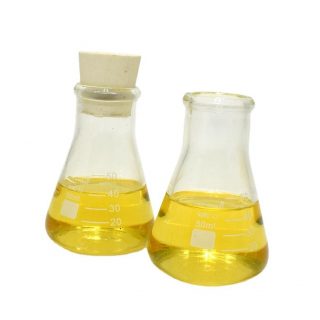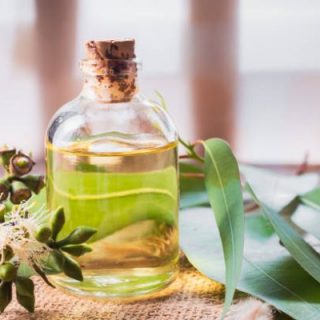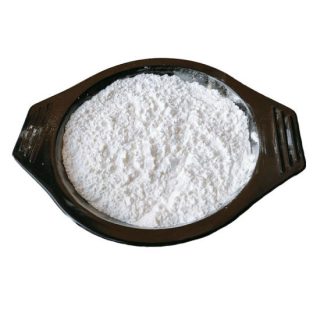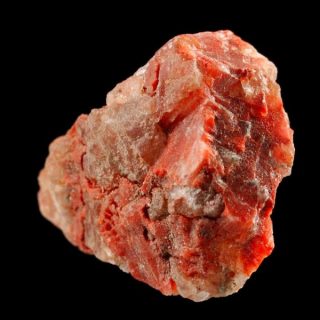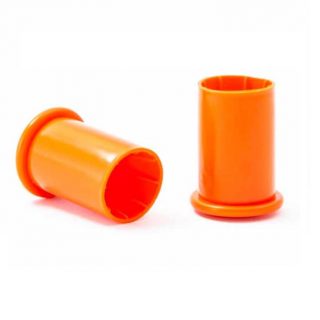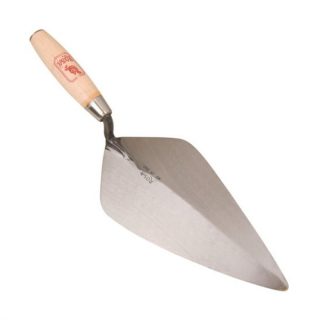Category: Chemicals
Chemicals
Showing 33–48 of 106 results
-
Didecyldimethylammonium chloride is an antiseptic/disinfectant that is used in many biocidal applications. It causes disruption of intermolecular interactions and dissociation of lipid bilayers. Didecyldimethylammonium chloride (DDAC) is used for various purposes, such as a fungicide for coolants, an antiseptic for wood, and disinfectant for cleaning. Despite the increasing likelihood of DDAC inhalation, available data on …
-
Methionine is one of the essential amino acid that can not be synthesized in animal body. To improve amino acid balance in feed and enhance growth and performance of poultry, DL-Methionine has been utilized for more than 50 years.
-
Ethyl acetate (systematically ethyl ethanoate, commonly abbreviated EtOAc, ETAC or EA) is the organic compound with the formula CH3−COO−CH2−CH3, simplified to C4H8O2. This colorless liquid has a characteristic sweet smell (similar to pear drops) and is used in glues, nail polish removers, and in the decaffeination process of tea and coffee. Ethyl acetate is the …
-
Ethyl oleate CAS 111-62-6 is a fatty acid ester formed by the condensation of oleic acid and ethanol. It is a colorless to light yellow liquid. Ethyl oleate is used as a solvent for pharmaceutical drug preparations involving lipophilic substances such as steroids. It also finds use as a lubricant and a plasticizer.Ethyl oleate is regulated as a food additive by the Food and Drug Administration. Ethyl oleate has been identified as a primer pheromone in honeybees.
-
Eucalyptus oil is colourless or light yellow oil liquid, with characteristic odor of eucalyptol aroma. Eucalyptus oil is obtained from fresh leaves of the tall evergreen eucalyptus tree. The tree, which has the botanicalname Eucalyptus Globulus is also known as fever tree, blue gum tree or stringy bark tree. 1ml eucalyptus oil dissolve in 5ml 70% alcohol under temperature of 20℃. Eucalyptus oil is made from the leaves of eucalyptus, camphor and branches of camphor.The initial eucalyptus oil is extracted by steam distillation,and refined processing. The proportion of raw materials and output is 2%-3%.
-
Ferric Chloride Anhydrous 96% is a dark grey to black powder. Iron(III) chloride is very toxic when in contact with humans or aquatic life. It is very hazardous in case of ingestion, skin contact (irritant), eye contact (irritant), ir inhalation. When forming a solution, Ferric chloride turns into a yellowish color.
-
Fipronil CAS 120068-37-3 is white crystalline powder. Fipronil is a broad-spectrum insecticide that disrupts the insect central nervous system by blocking GABA-gated chloride channels and glutamate-gated chloride (GluCl) channels, resulting in central nervous system toxicity. This causes hyperexcitation of contaminated insects’ nerves and muscles.
-
Francium (Fr), heaviest chemical element of Group 1 (Ia) in the periodic table, the alkali metal group. It exists only in short-lived radioactive forms. Natural francium cannot be isolated in visible, weighable amounts, for only 24.5 grams (0.86 ounce) occur at any time in the entire crust of Earth. The existence of francium was predicted …
-
Light duty hard surface cleaners are not intended to handle heavy dirt and grease. Because these products are expected to clean without rinsing and result in a streak-free shine, they contain no salts. Typical window cleaning items consist of alcohols, either ethanol or isopropanol, and surfactants for dissolving grease. Other components include small amounts of …
-
Helium is a chemical element with the symbol He and atomic number 2. It is a colorless, odorless, tasteless, non-toxic, inert, monatomic gas and the first in the noble gas group in the periodic table. Its boiling and melting point are the lowest among all the elements. Helium is used as an inert-gas atmosphere for …
-
Hydrochloric acid is the water-based, or aqueous, solution of hydrogen chloride gas. It is also the main component of gastric acid, an acid produced naturally in the human stomach to help digest food. Hydrochloric acid is also synthetically produced for a variety of industrial and commercial applications, and can be formed by a number of …
-
Hydrogen is the chemical element with the symbol H and atomic number 1. Hydrogen is the lightest element. At standard conditions hydrogen is a gas of diatomic molecules having the formula H₂. It is colorless, odorless, tasteless, non-toxic, and highly combustible.
-
Hydrogen peroxide is a chemical compound with the formula H₂O₂. In its pure form, it is a very pale blue liquid, slightly more viscous than water. It is used as an oxidizer, bleaching agent, and antiseptic, usually as a dilute solution in water for consumer use, and in higher concentrations for industrial use. Formula: H2O2 …
-
Sodium hypochlorite is a chemical compound with the formula NaOCl or NaClO, comprising a sodium cation and a hypochlorite anion. It may also be viewed as the sodium salt of hypochlorous acid. The anhydrous compound is unstable and may decompose explosively. Sodium hypochlorite is a caustic chemical. If it contacts tissues, it can cause injury. Swallowing sodium hypochlorite can lead to poisoning. Breathing sodium hypochlorite fumes may also cause poisoning, especially if the product is mixed with ammonia.




